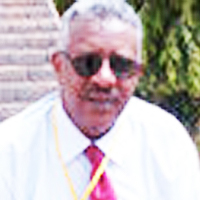Contractions of athlete’s foot and its muscle oxygenation
Published on: 5th December, 2018
Sustained isometric contractions of skeletal muscles produce intramuscular pressures that leads to blood flow restriction. In result an active muscle feels deficit of oxygen what bring to muscle fatigue. In another side during exercise we have physiological contradiction between raising of oxygen demand by working muscle and restriction of blood flow due to vessel pressing. To clarify this issue many research has been performed based mainly on measurement of blood flow in muscle tissue. The purpose of this study was to assess real-time changes in muscle oxygenation during a sustained isometric contractions of dorsiflexor muscle of low (30%), moderate (60%) and submaximal (90%) intensity. Experiments were conducted using the subject’s dominant (right) leg. Volunteers was recruited from eight male students of USIPC (age: 19±2 years, weight: 75±6 kg). Tissue oxygenation index (StO2) were recorded from the tibialis anterior using NIRS device (NONIN). Saturation was higher at 30% compared with both 60% and 90% MVC at all time points after start exercise and higher at 60% than 90%. Oxygen consumption (VO2) permanently increased from slow (30%) to moderate (60%) and submaximal contractions. After cessation of the each contraction there was a large and immediate hyperemic response. Rate of StO2 increasing after effort cessation what reflects the resaturation of hemoglobin which depend on integrity and functionality of vascular system and reflects blood vessel vasodilation. StO2 restoration rate permanently increased from slow (30%) to moderate (60%) and submaximal contractions too. At last on final stage of experiment arterial occlusion test has been performed to determine the minimal oxygen saturation value in the dorsiflexors. Oxygen saturation reached a 24±1.77% what is significantly higher than StO2 after 60 and 90%MVC.
So, we can conclude that oxygen saturation at 60% and 90% MVC are similar and sharply decreased after start of exercise. It means that after 60% MVC take place occlusion of blood vessels due to intramuscular pressure. Oxygen consumption of active muscle increased depend on intensity of exertion according to increasing of oxygen demand. StO2 resaturation rate (Re) permanently increased from slow (30%) to moderate (60%) and to submaximal contractions. Re increasing after effort cessation reflects the resaturation of hemoglobin which depend on integrity and functionality of vascular system and reflects blood vessel vasodilation.
The Comparison of Brachial Artery Parameters between the Clinical Cuff, Pneumatic Controlled Air Band (KAATSU), and Elastic Band during Blood Flow Restriction at the same Perceived Tightness
Published on: 30th April, 2024
The Blood Flow Restriction (BFR) technique is based on cuffs connected to a pressure device that induces partial arterial inflow. BFR combined with exercise has already been proven to increase strength, muscle mass, and muscular endurance. However, some BFR devices with pneumatic air bands, such as KAATSU (KA), are expensive and less accessible, making either a Sphygmomanometer Cuff (SC) or Elastic Band (EB) an interesting alternative. However, vascular parameters in response to blood flow restriction during KA, EB, and SC have not yet been compared. Purpose: The aim of this study was to compare the brachial blood flow behavior during restriction using bands such as KA, SC, and EB on the same perceived tightness. Methods: Thirty healthy men participated in a prospective crossover study. Participants underwent blood flow measurements before and during KA, SC, and EB use, with KA-perceived tightness taken as a reference. The brachial blood flow volume, the diameter of the artery, and blood flow velocity were measured before and immediately after the cuff’s inflation at a specific tightness. Results: Blood flow volume was significantly reduced in KA (52%, ES: 1.38), SC (61.7%, ES: 1.29), and EB (41.5%, ES: 1.22) (p
















